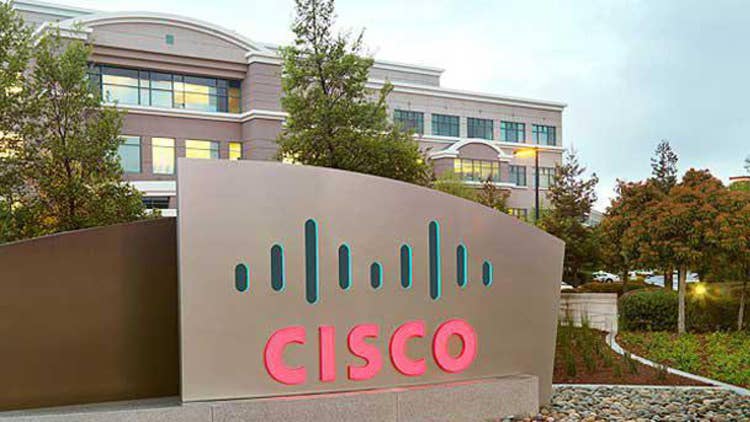What Cisco Is Doing To Support Its ‘Biggest Route To Market’: Managed Services
Cisco spoke to CRN about how “worlds are colliding” between managed services and XaaS, the profitable opportunity around selling managed services outcomes, as opposed to integrations, and the changes the company is making internally to support the sale of managed services.

The Model Of The Future
Managed services haven’t just become a popular offering for the channel and a sought-after way to consume technology for businesses, it’s also the biggest route to market for Cisco Systems.
Businesses all over the world have seen their IT budgets and requirements change over the last two years. Many organizations either don‘t want or can’t afford CAPEX spends anymore and managed services have ushered in a new way to buy IT that allow customers to grow as they need, offload daily tasks associated with monitoring and managing the solution and supporting their increasingly hybrid workforces. But the managed services model isn‘t how Cisco has historically gone to market. That’s why the San Jose, Calif.-based tech giant has been working behind the scenes within its own organization to support managed services and promote these sales through its critical channel ecosystem – many of which are experienced MSPs.
Alexandra Zagury, vice president of partner managed services and as-a-service sales, sat down with CRN ahead of the company’s managed services roundtable for press and analysts last week to talk about how Cisco is approaching the increasingly important route to market, the changes Cisco is making internally to its systems to support managed services, the connection between managed services and the everything as a service (XaaS) model, and what the company is doing specifically to help more partners sell managed offerings.
Here are excerpts from the conversation.

What is Cisco doing specifically to sell more managed services through partners?
Like any good marketing strategy, [ours] starts with three P’s — platforms, preferences and performance. Platforms is about how we‘re shaping and designing our technology differently to be managed-ready and how we’re trying to influence that with our business units. Preferences is all about how we’re reinventing the sales motion, because the thing about managed services is that it‘s truly a partner-led sales motion. That’s not typically how Cisco has gone to market because the Cisco sales motion is built on the resale sales motion. Last but not least is performance, or how we’re actually going to incentivize and work with our partners to ensure that we are making the right investments at the right time and we’re in the right place to ensure that profitability.
We’re seeing that as technology gets delivered as an outcome, there’s not one technology company that can deliver that outcome. We‘re thinking about how we partner, co-sell, and collaborate with technology vendors, with delivery partners, and [how we] influence partners is becoming more and more important.

Are managed services and everything as a service complimentary?
Absolutely! The easiest way to get an outcome right now for a customer is through a managed service and we saw that through the pandemic, where there was just suddenly an increased demand for managed services. Customers were de-risking; they didn‘t have to invest in capex and they couldn’t with everybody at home. [With managed services,] they could set something up really quickly and they had somebody else manage the infrastructure for them. All of a sudden, this world of opportunity opened up to them.
What’s really interesting is what starts out as a managed service, once you add a consumption model and experience layer and [it‘s] subscription-based, all of a sudden, you’re actually offering a managed as a service outcome. We see that the two are very, very tied together. We’re even seeing in a lot of the opportunities in the pipeline; it might start when a customer comes to us and is looking for this full-blown as a service solution and has the vision to get there, but it actually starts with, “Let me take this piece of my infrastructure and give it to the partner to manage.” And slowly, we can add the consumption model with pay as you go or pay as you grow and then really move on to the experience layer once that‘s that is built. So, it’s really interesting, the how the two are colliding, but also complementary to each other.

What kinds of changes is Cisco making to its operational structure and underlying systems to support managed services sales?
I would say that it starts, first of all, with our domain platforms. We have about nine of them — in all our different architectures — that we need to make sure are ready for as a service. That means that there are standardized API so that you can actually extract the data and information, eventually into that data lake, so Cisco and the partner can provide the analytics for the customer. So, it starts there, making sure that there is some standardization across our platforms. Then, the really big project that we‘ve undertaken in 1X is the commerce layer. A new commerce model that is fit for as a service offers and as a service consumption. That’s an ongoing project in 1X and you‘ll start seeing the benefits of that as we roll out our Cisco Plus portfolio. The last piece is the experience layer. There is where CX and PX [Partner Experience] Cloud is really going to play an important role. That ultimately will be the portal to deliver the commerce, entitlement, provisioning, and also the usage data to manage the consumption of that outcome.
Then, we‘re figuring out the architecture, because if we keep the commerce, entitlements, provisioning, and the management of the outcome at the CX and PX layer, then everything else will be at the domain layer, depending on what outcome you’re talking about because our portfolio is so vast. We’re having to figure out what that looks like from an architecture and experience point of view. We‘re very, very focused on this experience because you can’t say you have an as a service offer without having that cloud-like experience.

What incentives is Cisco offering partners to encourage the sale of managed services?
There are various things. The first one we‘re tackling —and you’ll see us tackle with SD-WAN as a service — is programmatic pricing. We‘re a very customer-led company, so we’re making sure that we‘ve got the right programmatic pricing that makes it worthwhile to be part of the Provider Program and we’re tackling that offer by offer. The other thing that we‘ve done is we’ve really doubled the incentives on our Partner Investment Fund. These are funds that, especially our Gold partners, have access to, to do training enablement, [proof of concepts] POCs, and all the things that they need to as they are going through their sales motion. But the other thing that we’re also trying to do is really reinvent how we are assessing and tracking performance. We don‘t want it to be a static thing. We want to be more nimble, so we’re trying to figure out how we develop different KPIs together, how we track [partners] so that we‘re not looking at just bookings and revenue, but we’re also looking at deployments of technology, how easy is it to use? How does it get adopted? We‘re looking at the whole lifecycle of the outcome together.
Where we’ve made the most investment is in service creation. So, really mapping our resource investment to the partner sales motions to support them. And that’s part of the Partner Program because what tier you are [dictates] the support [a partner] gets.

What’s the biggest challenge for partners when it comes to selling managed services?
I think it starts with the technology. [partners] are asking us how we‘re making our technology managed-ready so that it‘s easier for them to deploy and integrate. There’s less margin and profitability in doing the integration, and there‘s much more interesting opportunities in managing things that are already integrated — outcomes. They’re looking at what are we doing from an API standpoint, what are we doing from an automation standpoint, [and] What we’re doing from a data and insights point of view. Partners are starting to enter what we‘re calling “outcome chaining.” When a customer is no longer asking for a solution or an architecture, they’re really asking to fix this pain point, [partners] are having to chain all this technology and all these commercial models together because it‘s not just about the technology, it’s also about the commercial model, to deliver to deliver on that outcome.
The second thing that we‘re seeing is [partners] are facing exactly the same challenges we’re facing, which is: How do you re-organize? How do we make sure that we have the right skills in the team, because technology is moving so fast, but also, this is a very different way of selling or servicing your customers. You‘re not going there and saying: “Here, this is what I have to offer,” you’re having to tease out what really is the problem that you‘re trying to solve and then you’re having to have conversations around digital strategy. Not every partner has a workforce that is equipped to do that.
Last but not least, is this concept of performance and profitability. The KPIs are changing, it‘s no longer just based on revenues. So, as the value starts being abstracted away from the hardware and the software and you’re putting the value on the service, you‘re having to define success differently. Then of course, profitability. Your traditional resellers that are transforming to be managed services players are having to rethink how they actually make money or monetize the service and not so much out of reselling the hardware reselling the software.

How important is the connection between customer success and managed services?
It’s very, very important. I used to say that this is a completely changed model because you can build the best service in the world, but if you then don‘t have acceleration, execution, and partner success, you’re going to fail. All these things need to work together. The last mile, which is partner success — driving that Day One and Day Two — is what‘s going to set you up for success to deliver on that SLA promised from a managed service, or that outcome. So, it is extremely important. And that’s part of what we‘re trying to do is really figure out what are the resources that we need to help the partner.
For example, at Cisco, we have this great role called Partner Operations Manager — we call them the PAMs — and they really help partners work through, [things like] You‘ve delivered the service, it’s great, but then something doesn‘t work. Who do they call? They can call the technical support — somebody that just solves the day-to-day problems that a partner might encounter. The PAM is really, really important. So, we’re trying to figure out how to surgically invest to ensure that especially for our partners, we‘re fully staffed across the board.